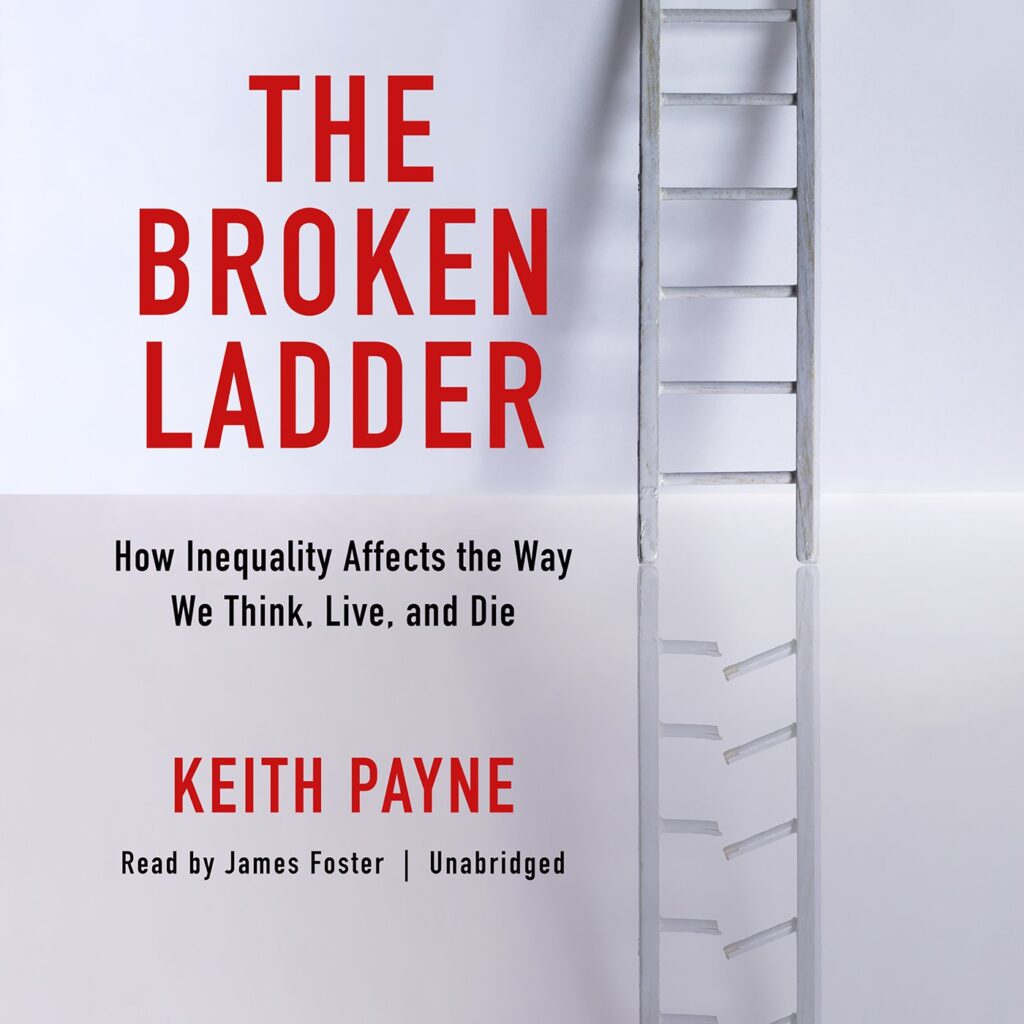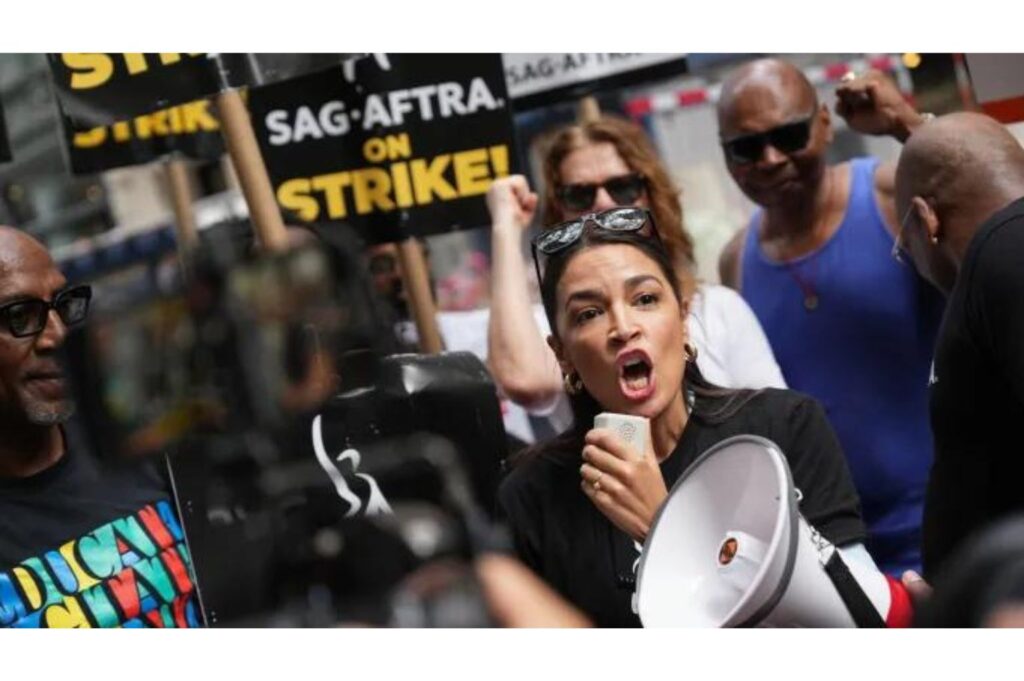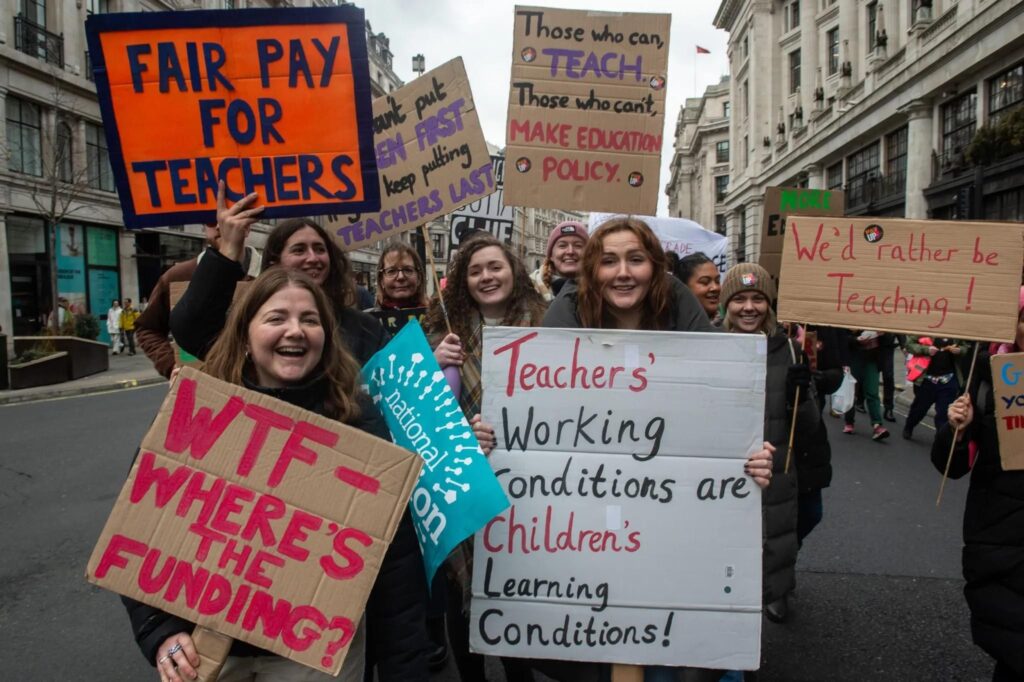September 2024 Update:
The US Bureau of Labor Statistics has published documented work stoppages up through July 2024. February was the only month that did not register worker strikes from major unions across the United States. That being said, the average number of workers on strike each month has maintained at or around the 100,000 mark which is at or above the 2023 average, signaling a continuation of tense labor negotiations for the rest of 2024.
What the Labor Day 2024 Hospitality Strikes Tell Us About Inequality in the US
Over Labor Day weekend in the United States, over 10,000 hotel workers walked out, throwing a wrench in the travel industry during a busy holiday. The big hotel chains such as Hyatt, Marriott and Hilton had to make do with nearly 40% less workers, especially in the housekeeping department.

Highly Recommended Reading
The Broken Ladder: How Inequality Affects the Way We Think, Live and Die
by Keith Payne
The hospitality industry in the United States is an interesting sociological experiment. As inequality statistics show the working class falling further and further behind the wealthy, nowhere in America do these two groups interact more with each other in exceedingly personal ways than in resorts, hotels, and high-end restaurants.
Unionized workers in these hotels are now riding the wave of worker discontent that has been sweeping the US now for over a year and has not end in sight, and they struck during one of the most busy travel days of the year.
Read: June 2024 saw Samsung’s first ever labor strike, and what the South Korean worker stoppage means for the global economy.
The 2023 Work Stoppage Boom
2023 witnessed the acceleration of labor strikes and protests across the world that took root in 2022, signaling a powerful resurgence of labor movements and workers’ rights. From the streets of Paris to the bustling cities of the United States and the remote regions of the Philippines, workers raised their voices to demand fair wages, better working conditions, and social justice.
What’s Fueling The Union Boom?
Less than a decade ago, worker’s rights advocates were lamenting the death of the Union. Things did indeed look bleak leading up to the twenty-teens: corporations were given rights that were previously reserved for individuals, such as give large amounts of money to political campaigns and even refuse to comply with federal mandates on religious grounds.
Several key factors have converged to create a historic surge in labor movement activity, reflecting a renewed emphasis on workers’ rights, social justice, and fair working conditions.
1. The Impact of COVID-19: The COVID-19 pandemic has played a pivotal role in driving the current union boom. As the virus spread globally, millions of people witnessed the devastating consequences firsthand, with loved ones falling ill and some tragically losing their lives. This profound experience of vulnerability and loss pushed many to reevaluate their priorities and advocate for better working conditions, including improved healthcare, workplace safety, and job security.
Frontline workers, in particular, became the face of the pandemic’s heroism and sacrifice. Healthcare professionals, grocery store employees, delivery drivers, and more realized the essential nature of their work and the need for stronger protections. The pandemic acted as a catalyst, highlighting the importance of labor movements in safeguarding workers’ welfare and inspiring many to join or support unions.
2. Political Environment Post-Donald Trump: The political landscape after Donald Trump’s indictments has witnessed a significant shift towards a more worker-friendly stance. While Trump’s presidency was characterized by policies that often favored businesses over workers, the aftermath of his presidency has seen a change in the tone and direction of labor policies.
The indictments and legal challenges faced by Trump have led to a more profound examination of corporate power and political influence. As a result, politicians and lawmakers are increasingly attuned to the demands of their constituents, including the call for stronger workers’ rights and protections.
The Biden administration, in particular, has taken steps to promote pro-union policies, including the appointment of labor-friendly officials and advocating for the PRO Act (Protecting the Right to Organize Act). This legislative proposal, if passed, would represent a significant victory for labor movements, making it easier for workers to unionize and negotiate collectively.
3. Momentum from Successes in 2022: The successes of labor movements in 2022 have provided a powerful tailwind for the union boom in 2023. In the previous year, numerous high-profile strikes and protests led to tangible victories, capturing the public’s attention and inspiring others to follow suit.
Some notable successes included wage increases, improved working conditions, and enhanced job security for workers in various sectors. These victories served as examples of the positive impact that collective action can have, encouraging workers in different industries to organize and demand better treatment from their employers.
One of the most significant triumphs of 2022 was the passage of workers’ rights legislation in several states, including California, New York, and Washington. These new laws offered workers greater protections, such as increased minimum wages, paid family leave, and workplace safety measures. The positive outcomes of these initiatives encouraged workers in other states to push for similar reforms, further fueling the union boom.
Labor Strikes of 2023
Here are the highlights from 2023 from around the world:
February Strikes:
- French Pension Reform Unrest: The year kicked off with significant unrest in France over proposed pension reforms. Workers and unions vehemently opposed the government’s plan to overhaul the pension system, fearing it would lead to reduced retirement benefits. Protests, strikes, and blockades disrupted daily life, demonstrating the French labor movement’s resilience.
- Israeli Judicial Reform Protests: In Israel, protests erupted against proposed judicial reforms that many believed would undermine the independence of the judiciary. Lawyers, judges, and other legal professionals came together in a show of unity, emphasizing the importance of the justice system’s integrity.
- Lebanon Teachers Strike: Lebanon’s education sector was paralyzed by a teachers’ strike. Educators demanded better pay, improved working conditions, and increased investment in the country’s crumbling education infrastructure. The strike highlighted the commitment of Lebanese educators to providing quality education.
- Alaskan School Bus Drivers Strike: In the icy wilderness of Alaska, school bus drivers went on strike for better wages and safer working conditions. Despite the harsh climate, their determination illustrated the global nature of labor movements, even in the most remote corners of the world.
- Canadian Women’s Soccer Labor Dispute: The Canadian Women’s National Soccer Team’s labor dispute sent shockwaves through the sports world. Players fought for equal pay and treatment compared to their male counterparts, serving as a reminder that the fight for workers’ rights extends beyond traditional labor industries.
- Palestinian Teachers Strike: Palestinian teachers joined the global labor movement with a strike aimed at improving their working conditions and raising awareness of the challenges they face in conflict zones. Their resilience in the face of adversity was an inspiration to many.
- Temple University Graduate Students Strike: Graduate students at Temple University in the United States went on strike to demand fair wages, improved benefits, and better working conditions. Their determination underscored the importance of higher education workers’ rights.
March and April Strikes:
- German Public Transport Strike: Workers in Germany’s public transport sector launched a strike to demand better pay and working conditions. Their action highlighted the crucial role of public transportation in society.
- New Zealand Teachers Strike: New Zealand teachers took to the streets to advocate for improved educational resources and higher wages, reaffirming the importance of investing in education.

- Transport Strike in the Philippines: In the Philippines, transport workers staged a strike to demand better pay and safer working conditions, shedding light on labor issues in Southeast Asia.
- Canadian Federal Worker Strike: Canadian federal workers engaged in a strike to demand fair wages and job security, demonstrating that labor movements span the public and private sectors.
- Los Angeles Teachers Strike: Teachers in Los Angeles, California, went on strike for better wages, smaller class sizes, and more resources for students, emphasizing the connection between teachers’ working conditions and students’ learning experiences.
- Nigerian Airport Strikes: Nigerian airport workers went on strike to protest poor working conditions and inadequate facilities, calling attention to the challenges faced by aviation workers in Africa.
- Rutgers University Strike: Faculty and staff at Rutgers University in New Jersey, USA, engaged in a strike to demand fair wages, job security, and improved benefits in the higher education sector.
- UNRWA Strike: The United Nations Relief and Works Agency (UNRWA) employees staged a strike, highlighting the challenges faced by humanitarian workers and the importance of their efforts in conflict zones.
May and June Strikes:
- Oakland Teachers Strike: Oakland, California, saw teachers strike for better wages, smaller class sizes, and improved resources, echoing the sentiments of educators worldwide.
- Writers Guild of America Strike: Writers in the entertainment industry went on strike for fair compensation and improved working conditions, emphasizing the importance of creative workers’ rights. This strike continues today.
- Romanian Teachers’ Strike: Romanian teachers demanded better pay and working conditions, revealing the international dimension of the struggle for educators’ rights.
- Thüringer Waldquell Strike: Workers at the Thüringer Waldquell beverage company in Germany struck for better wages and job security, showcasing the importance of labor movements in various industries.
- Ulyanovsk Automobile Plant Wildcat Strike: In Russia, workers at the Ulyanovsk Automobile Plant engaged in a wildcat strike to protest labor violations and demand better conditions, highlighting labor issues in Eastern Europe.
- Gannett Strike: Journalists and media workers at Gannett, a major media company, went on strike for fair compensation and journalistic integrity, emphasizing the role of the media in shaping public discourse.
- Starbucks Strike: Employees of the global coffee giant Starbucks launched a strike for better wages and working conditions, emphasizing the importance of service industry workers’ rights.
- Wabtec Strike: Workers at Wabtec, a transportation equipment manufacturer, engaged in a strike to demand fair wages and job security, highlighting labor issues in the manufacturing sector.

July to September Strikes:
- UPS Avoids Strike: This was not officially a strike but it should be mentioned that UPS avoided a massive strike by improving a new five-year contract that increases the average annual salary of a UPS driver to $170,000 and health benefits were also increased, as well as air-conditioned trucks and an extra paid holiday.
- BC Port Strike: Workers at British Columbia’s ports went on strike, disrupting supply chains and emphasizing the crucial role of port workers in global trade.
- SAG-AFTRA Strike: Members of the Screen Actors Guild-American Federation of Television and Radio Artists (SAG-AFTRA) launched a strike for fair compensation and improved working conditions in the entertainment industry.
- Robert Wood Johnson University Hospital Strike: Healthcare workers at Robert Wood Johnson University Hospital in New Jersey, USA, went on strike to demand better wages and patient care, underscoring the importance of healthcare workers’ rights.
- Sogo & Seibu Strike: Workers at Sogo & Seibu, a Japanese department store chain, engaged in a strike for better wages and job security, highlighting labor issues in the retail sector.
- Pakistan Traders Strike: Traders in Pakistan launched a strike to protest government policies and demand fair treatment, showcasing the role of small business owners in labor movements.
The labor strikes and protests of 2023 represented a global resurgence in workers’ rights activism. From Europe to Asia, North America to Africa, workers from diverse sectors and backgrounds joined hands to demand fair wages, improved working conditions, and social justice. These strikes served as a powerful reminder that the struggle for workers’ rights knows no borders and transcends industries, however advocates of workers rights are preparing for the pendulum to swing back towards the right as history has always seen.





